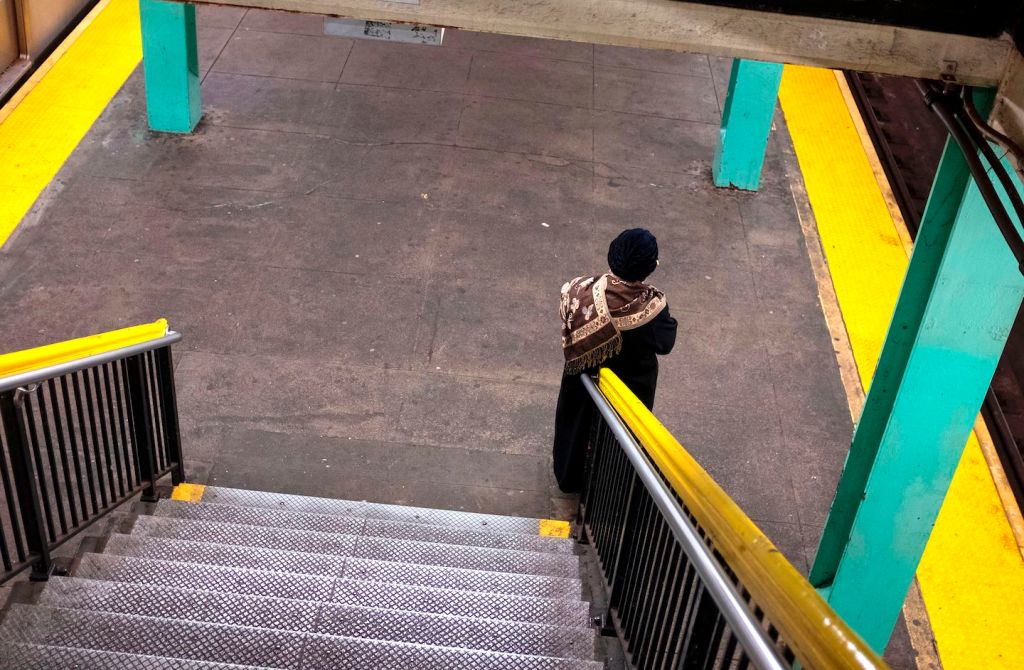Twenty-two-year-old mother Malaysia Goodson died Monday night in New York City after she fell down a flight of stairs at a subway station while trying to carry her daughter in a stroller. Police arrived at the Seventh Avenue and 53rd Street station to find Goodson unconscious. She was later pronounced dead at a local hospital. Her one-year-old daughter survived the fall.
The subway station where Goodson died, located in the middle of Manhattan, does not have an elevator. That is not unique. Of New York City’s 472 subway stations, only 119, or 25 percent, have an elevator, and with the average subway station elevator breaking down 53 times per year, NYC’s MTA-run public transit system has been called “one of the least accessible public transportation systems in the United States.” According to The New York Times, NYC’s subway system has the lowest accessibility rate among the 10 largest transit systems in the US.
Videos by VICE
Last year, the president of the New York City Transit Authority (NYCTA), Andy Byford, promised to make 50 more stations accessible to wheelchair users by 2025. But even if the MTA delivers on that promise, over half of NYC subway stations will still be inaccessible to those who cannot use stairs.
The MTA—which has been sued over accessibility by residents and disability organizations numerous times—has been accused of ableism, classism, ageism, and racism in its failure to make the subway usable for all NYC residents. According to a report by the New York City Comptroller’s office, there are significantly fewer accessible subway stations in the Bronx and Brooklyn, the boroughs with the lowest average incomes and high populations of people of color, than there are in Manhattan and Queens. The report also concluded that the MTA’s negligence is prohibiting many disabled New Yorkers from joining the work force, and found that around 341,000 seniors live in neighborhoods without accessible subway stations.
After the tragic death of Malaysia Goodson on Monday, some have said that the MTA’s inaccessibility to parents and pregnant people is also a reproductive justice issue.
“In the case of Malaysia Goodson’s death, we’re seeing a systemic problem—ableism in public transit design and infrastructure, alongside a lack of financial investment in public services—interfere with her right to parent her child safely,” says Megan Magray, reproductive rights advocate and creator of The Pill, a weekly newsletter on sexual and reproductive health and rights. “There’s been a failure to recognize the fact that mobility is automatically temporarily impaired for otherwise able-bodied parents of babies and young children. New Yorkers deserve the right to have children without being rendered immediately unable to navigate the city’s subway stations safely.”
For More Stories Like This, Sign Up for Our Newsletter
As observed in parenting blogs advising “Tips for Riding the NYC Subway with a Stroller” and the MTA’s offering of “baby on board” buttons to pregnant women, the subways limitations and safety hazards for those with children are well-known, but little has been done to remedy the issue for parents, seniors, and disabled people. Some MTA policies directly target parents. For instance, the MTA does not allow strollers on buses unless they are collapsed, which means parents often have to hold their child in one hand, collapse a stroller with the other, then board and ride the bus. In 2017, a Brooklyn father started a petition to allow un-collapsed strollers on public buses, but the MTA policy on strollers has yet to change.
“Imagine trying to navigate steep or icy stairs just to get to affordable transportation. Now, imagine having to do that on your way to or from an appointment for an abortion or other necessary healthcare,” says Kimberly Inez McGuire, Executive Director of Unite for Reproductive & Gender Equity (URGE). “It’s not enough to have abortion clinics and other healthcare providers in our communities. In order to access those services, people also need to have childcare, transportation to clinics, and paid sick leave. It’s about the bigger picture of what reproductive justice truly means.”




